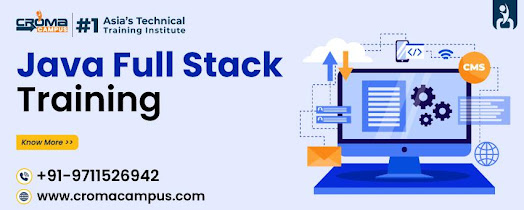Introduction:
In the last few years, Python has become the most popular programming language in the world. Major companies like Google and Facebook use it for its versatility. And also, its ease of use makes it a great choice for beginners. Python is useful for back-end development, front-end development, data science, machine learning, and many more. When you talk about the Python world, there are three main positions: back-end developer, front-end developer, and full-stack developer. A back-end developer looks after the logic and flow of data while a front-end developer looks after the visual representation of data to users. To work fluently in Python with all three layers, you can take Python Full Stack Developer Training in Delhi for better guidance. Basically, they create a streamlined user experience across both the back-end and front-end portions of an application. Python Full stack development is a rewarding career path, but also quite challenging.
Follow these steps to build your career in Python Full Stack Development
1. Start with the Basics of Python Programming:
The Python programming language is useful for backend work, frontend work, or the full stack for web applications. In order to become a Python full-stack developer, you require to learn the basics of the language. This comprises of understanding how to write and run Python code, as well as learning the fundamental concepts of programming. Once you have built a strong foundation in Python, you can proceed to learn more advanced topics.
2. Get Familiar with the Popular Python Libraries:
As a Python full-stack developer, you need to get familiar with the most popular Python libraries. These libraries include pandas, SciPy, NumPy, matplotlib, and seaborn for data science; sci-kit-learn for Machine Learning; and Django, Flask, and Pyramid for full-stack web development with Python. By acquiring these libraries, you’ll be able to build powerful and sophisticated applications using Python.
3. Proficient with HTML, CSS & Javascript:
For a Python full-stack developer, it is necessary to have a strong foundation in HTML and CSS. While Python is a powerful programming language, HTML and CSS dictate the look and feel of a website. Thus, Python full-stack developers must effectively utilize both languages in order to develop beautiful and user-friendly websites. In addition to HTML and CSS, python full-stack developers should also have a strong understanding of JavaScript, jQuery, and AJAX. With these tools, you can create interactive web applications that are both responsive and engaging. By building their skills in all areas of web development, Python full-stack developers can position themselves as experts in the field.
4. Grasp the knowledge regarding Database Systems:
Being a Python full-stack developer, you’ll also require to know about database systems. This adds to learning how to design, build, and query databases. Additionally, you should also have a strong understanding of algorithms and data structures. By learning about database systems, you’ll be able to retrieve and store data efficiently.
5. Get Experience with Popular Frameworks:
There are various popular Python frameworks like AIOHTTP, CherryPy, Dash, Django, Falcon, etc. that you can use to develop web applications. By gaining experience with these frameworks, you’ll be able to build scalable and robust web applications. Additionally, you can also use these frameworks to learn about best practices in Python web development Environment.
6. Familiarity with Popular IDEs & Code Editors:
There are various popular code editors and IDEs that you can use to create Python applications. Some of these IDEs include Visual Studio Code, PyCharm, and Atom. By getting experience with these IDEs, you’ll be able to create Python applications more efficiently. Additionally, you can also work with these IDEs to learn about best practices in Python development.
Conclusion:
You can follow all the above steps, to start your career in Python web development. Moreover, to help you in this journey, Python Full Stack Developer Training in Noida can guide you on the correct path. Also, becoming a python full-stack Python developer is not rocket science. With true passion and correct guidance, you can ace this role. Initially, it may be tough for you, but with time you can definitely achieve better heights. Thus, without wasting time, you should your journey towards Python Full Stack Development.










